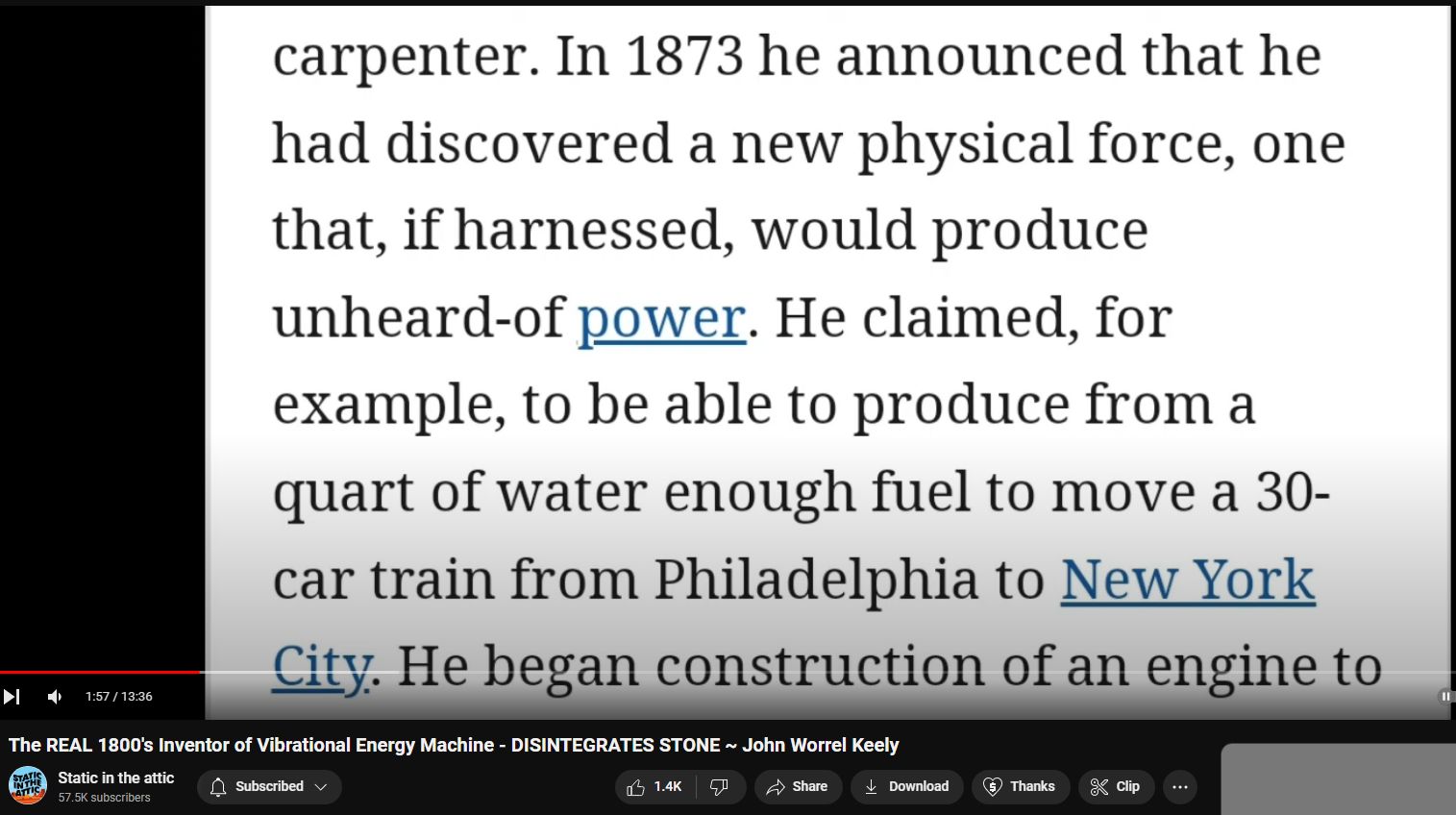The REAL 1800’s Inventor of Vibrational Energy Machine – DISINTEGRATES STONE ~ John Worrel Keely
Tesla’s wonder of 3, 6, 9.
See also Dale Pond’s excellent exposition — https://www.youtube.com/watch?v=RWvtzlt6BUE
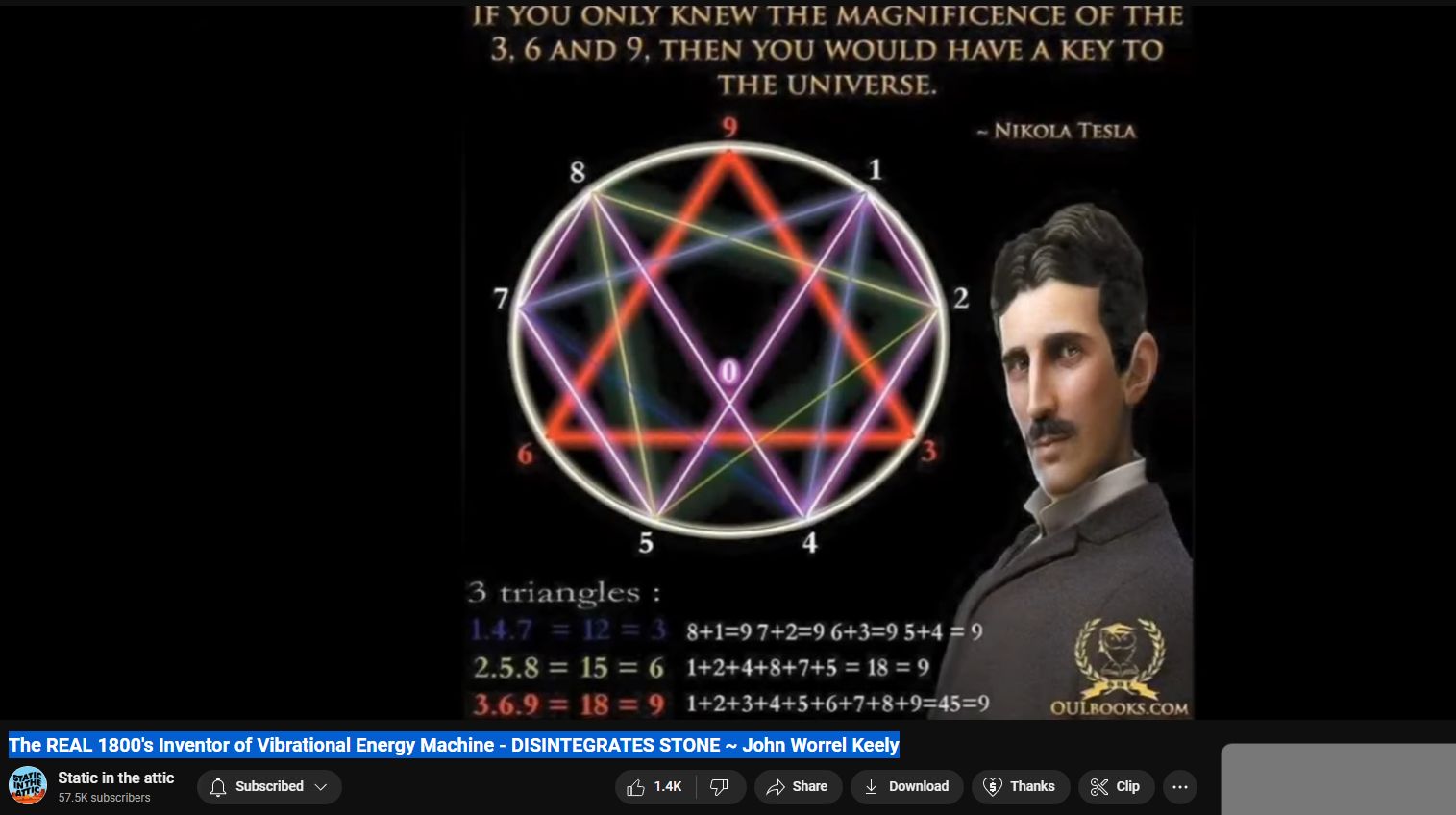
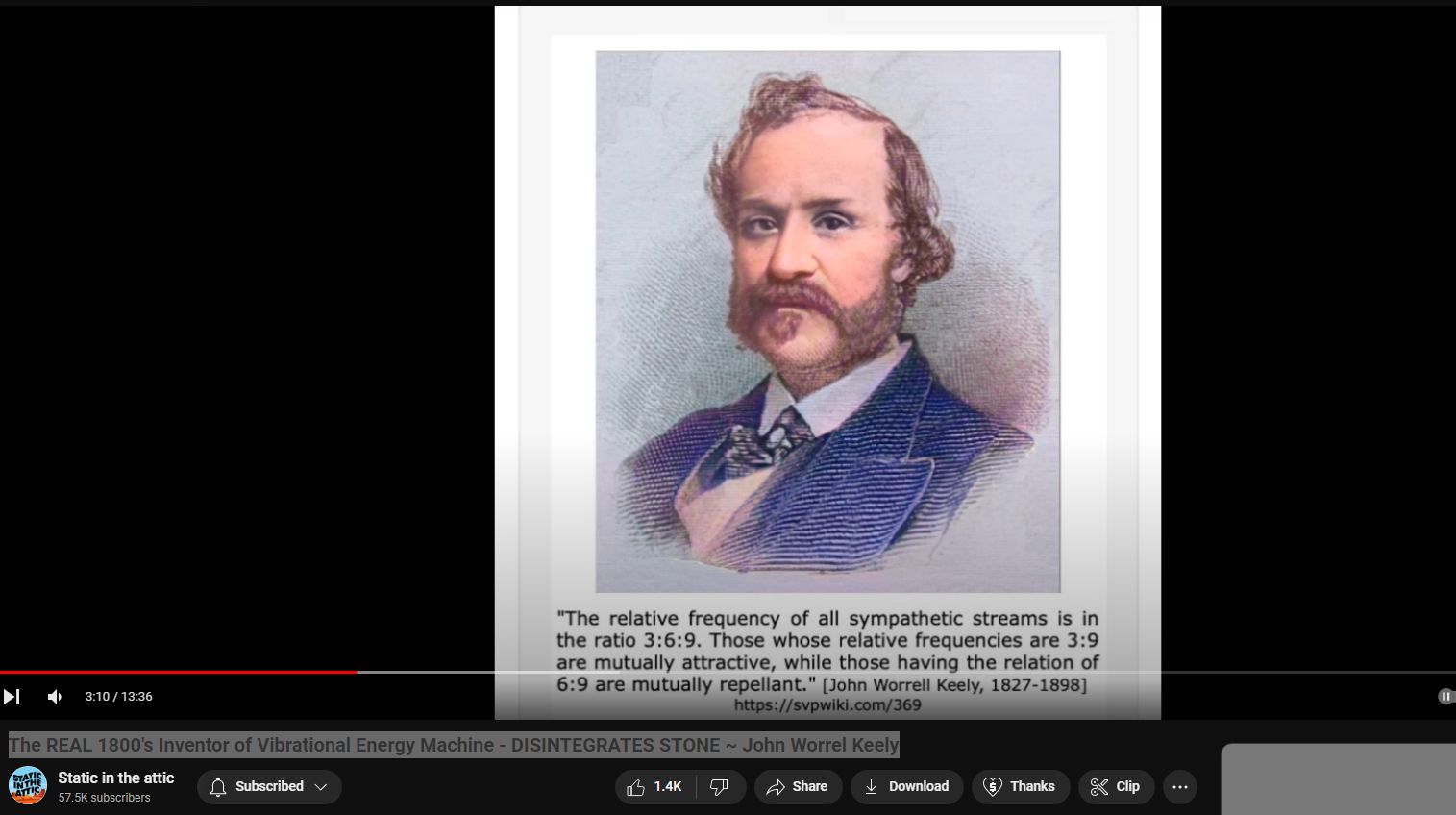

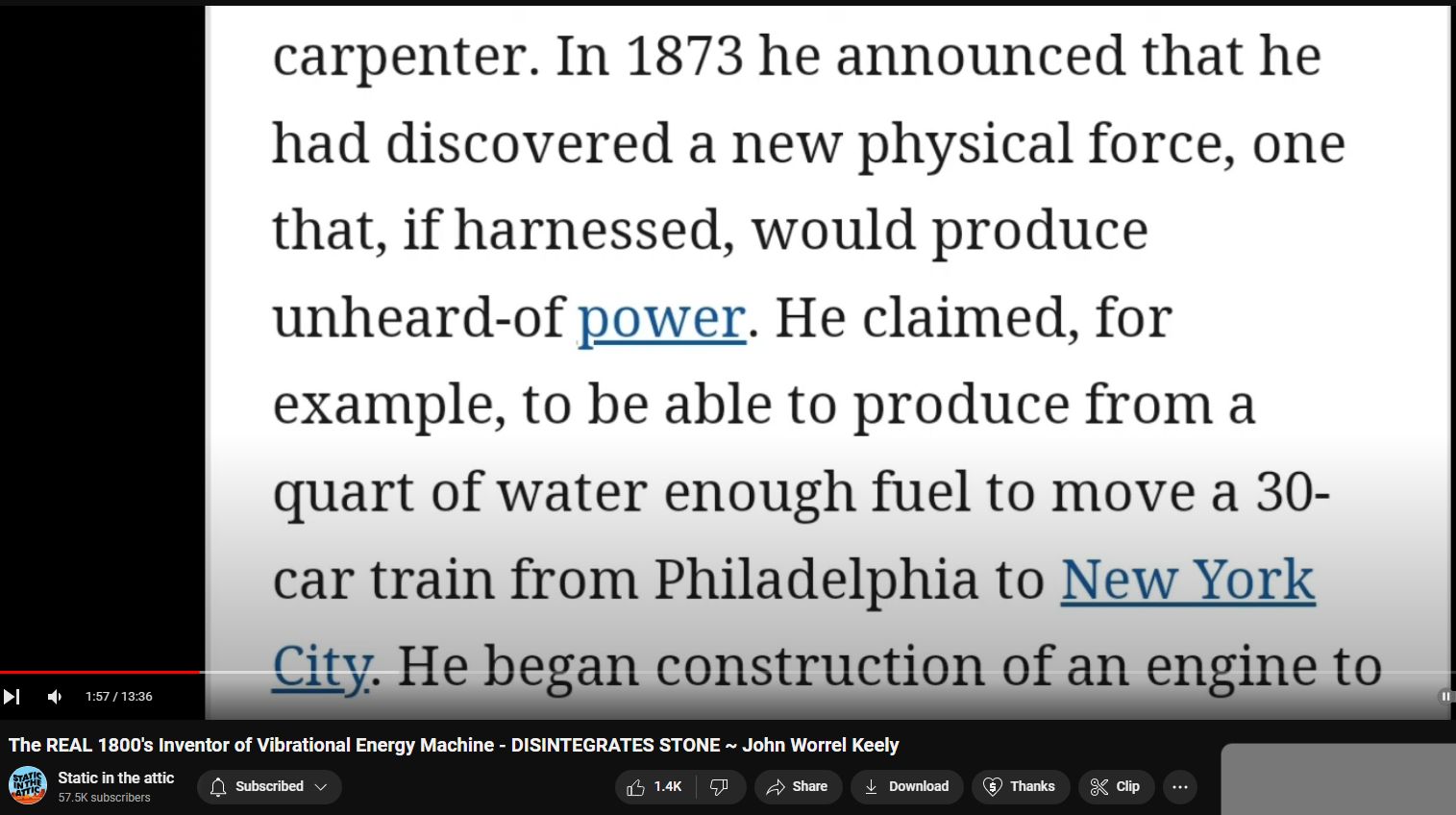
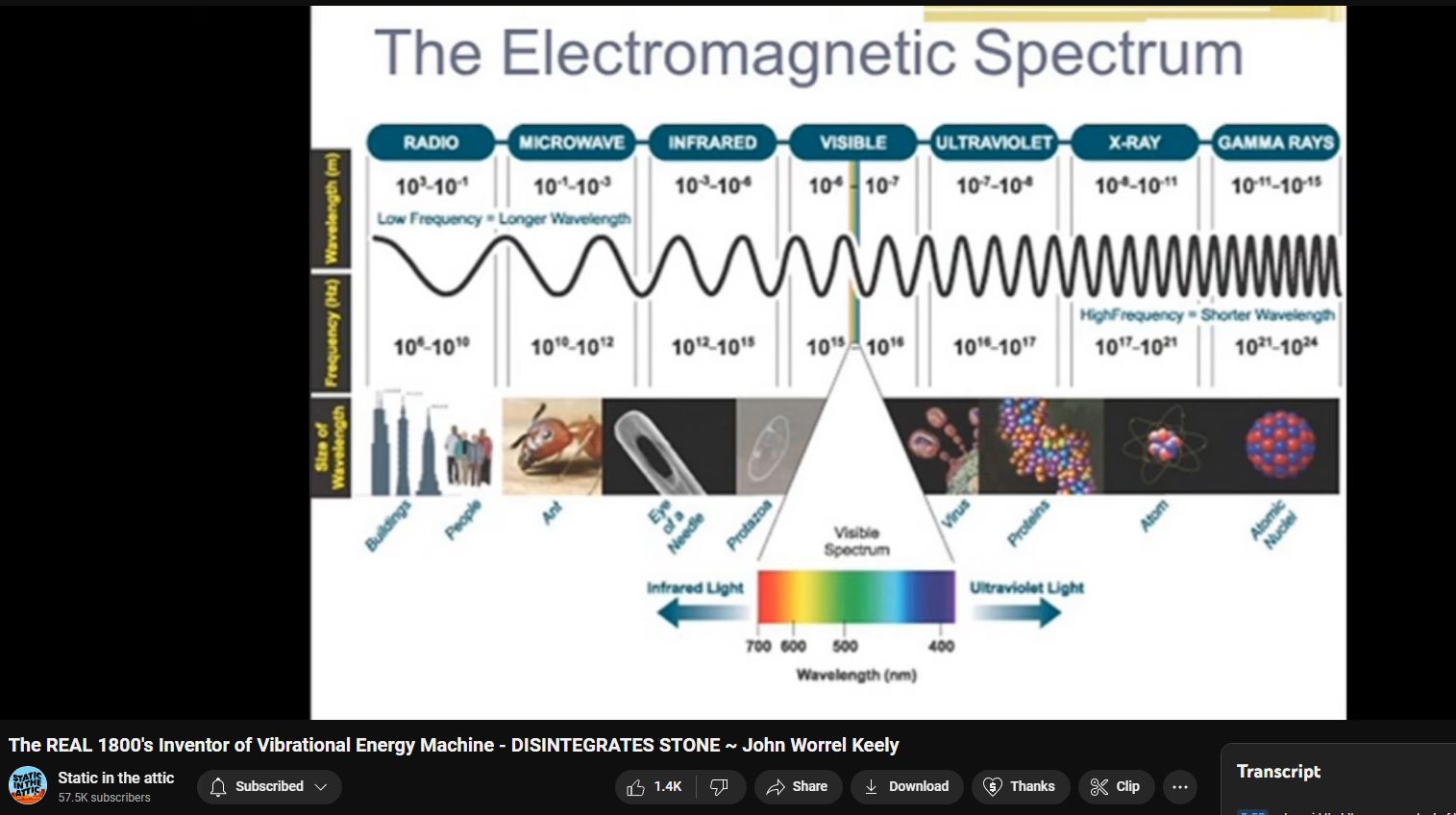
John Worrel Keely
John Worrell Keely (1827–1898) was an American inventor from Philadelphia who is most famously associated with the claim of developing a “motor” that could be powered by a mysterious force he termed “etheric force” or later, “vibratory sympathy.” This purported force, according to Keely, was a form of energy derived from the ether, a concept that was somewhat aligned with contemporary 19th-century scientific theories but has since been discredited.
Inventions and Claims
Keely’s work centered around the Keely Motor, which he claimed could harness this etheric energy to produce motion, promising a revolutionary new source of power that would render steam and electricity obsolete. He demonstrated his inventions to potential investors and the public, showing machines that purportedly ran on his mysterious energy source, performing tasks like lifting weights and generating music from water.
Skepticism and Controversy
Despite the initial excitement and substantial investment from hopeful backers, Keely’s inventions were met with skepticism from the scientific community. Critics accused him of employing hidden conventional energy sources, like compressed air, to drive his machines. Keely’s refusal to disclose the principles of his technology to independent investigators added to the controversy and skepticism.
Legal and Financial Issues
Over the years, Keely struggled with legal and financial challenges, as he repeatedly failed to bring a viable product to market. Investors sued for fraud, and Keely’s work was increasingly seen as a mix of pseudoscience and elaborate deception. After his death, investigations into his laboratory suggested that his machines were indeed mechanically driven by hidden pneumatic devices rather than any unknown form of energy.
Legacy
John Worrell Keely remains a controversial figure, often cited as an example of pseudoscience and technological fraud. However, his story is also seen in a more sympathetic light by some, who view him as a man driven by genuine if misguided, belief in his inventions. The fascination with Keely’s life and work persists, reflecting the timeless allure of inventors who dare to dream beyond the boundaries of contemporary scientific understanding, even when those dreams are not grounded in reality.
In the broader context of history, Keely’s endeavors can be seen as part of the 19th-century landscape of invention and discovery, a time when the lines between science, pseudoscience, and outright fraud were often blurred. His legacy serves as a cautionary tale about the importance of skepticism and the need for scientific validation in the pursuit of technological advancements.
Dale Pond
Dale Pond is not widely recognized in mainstream scientific or historical texts but is known within certain niche circles for his work on sympathetic vibratory physics and his interest in the work of John Worrell Keely. Pond advocates for the theories around vibrational science and technology, which are considered outside the scope of conventional physics. He is a proponent of what he views as the interconnectedness of science, philosophy, and spirituality, drawing upon the ideas of Keely, Tesla, and others who have explored the fringes of science and technology.
Dale Pond has contributed to the field through writings, lectures, and the promotion of devices that he claims are based on principles of sympathetic vibration and resonance. His work touches upon concepts that are often associated with alternative energy theories, the science of sound, and the historical pursuit of devices that operate on principles not recognized by mainstream science.
Pond’s efforts also extend into educational endeavors, aiming to revive interest in what he sees as forgotten or suppressed technologies and theories from the past. He has been involved in organizing conferences, publishing books, and maintaining a presence in communities interested in alternative science and technology.
It’s important to note that while Pond’s work is of interest to those exploring beyond the conventional boundaries of science, his theories and claims do not have broad acceptance in the scientific community. The field of sympathetic vibratory physics, as advocated by Pond, is viewed skeptically by mainstream scientists and is classified under pseudoscience due to a lack of empirical evidence and validation through peer-reviewed research.
For those interested in the history of science and the exploration of unorthodox theories, Dale Pond and his work represent a fascinating case study in how alternative ideas persist and evolve outside the academic and industrial mainstream.
